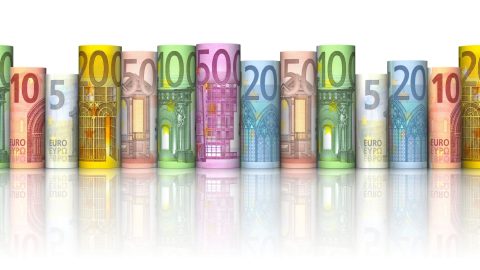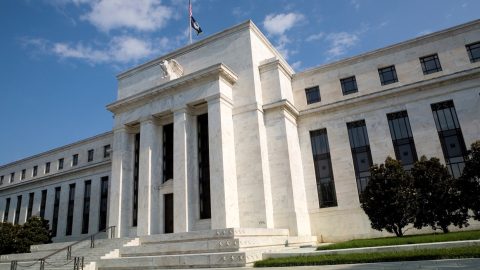Articles about “interest rates”
Increase in inflation has come to an end for now
Two developments are prominently noticeable on the markets at the moment: on the one hand, the indicators of real economic growth suggest a stable real economic growth rate of about 3%. On the other hand, we have seen global consumer price inflation decline since the beginning of the year. The reflation phase, i.e. the general increase in inflation in the second half of 2016, seems to be over (for now).
The global economy based on the Goldilocks principle
The global economy is growing moderately, inflation is low, and the monetary policy is loose. This environment supports many asset classes from bonds to equities. The political uncertainty has been absorbed rather well so far too. Will this situation last?

Curves (part 6) – provider of yields
Have you ever been to a Californian beach? If you have, you may have noticed the hoards of “searching”, elderly people. They would usually be holding a metal rod that beeps, looking for valuables that no-one else has found. And sometimes somebody finds a lost golden watch on the beach. But most of the time the things that turn up are only worthless beer caps.

Curves (part 5) – the offensive decides the match
Football has two strategies. Some prefer focusing on the defensive so as not to concede a goal – i.e. they try to maintain the status quo. Other teams favour the offensive and actively engage in a fight for victory – i.e. they take risks. The strategies on the bond markets are similar. Credit-safe government bonds are preferably used to protect one’s wealth, whereas risky corporate bonds are chosen to produce surplus gains.
Curves (part 4) – the premium, or spread, is the clincher
The interest rates, or coupons, that bonds pay differ due to a variety of parameters. If bond A pays a higher interest rate than bond B, this premium is referred to as spread.

A masterpiece
The US central bank Fed increased the Fed funds rate last Wednesday. The risky asset markets reacted to the move with an increase. At the same time, the US dollar depreciated. How can that be explained?
Equities: Threats and opportunities of rising interest rates
US interest rates are on the rise. It took the Federal Reserve Bank (“Fed”) twelve months, after the initial lift-off in December 2015, to make the second move, but for two reasons the odds of more frequent rate hikes over the next twelve months have increased.
US central bank confirms trend reversal
We have seen a number of trend reversals this year, one of them being the end of the negative growth surprises. The forecast of economic growth and inflation are currently not subject to downwards revisions any longer.
Emerging markets bonds in demand
Economic growth in the emerging markets has picked up substantially, while that in the industrialised economies has been rather stable. This has led to an increase in the growth differential in the emerging markets’ favour. Investor demand for emerging markets bonds has been on the rise in search of higher yields and interest rates.
Capital market review 2015
Capital markets experienced significant price fluctuations in 2015. While euro government bonds recorded a relatively good performance contrary to expectations, riskier bond segments such as high-yield corporate bonds were disappointing. Regionally speaking, stock exchanges recorded a very mixed set of performances. Emerging markets such as China and Brazil ended up on the disappointing side, whereas […]
Interest rate lift-off – Stay cool
Following last week’s surprisingly strong employment report, the odds that the US Federal Bank will start raising its policy rate at the next FOMC-meeting in December jumped to almost 70%. Of course, 70% is still short of 100%, but most observers believe that something terrible must happen in the next four weeks to make the […]
Bond investments in the current environment
After the recent, rather substantial corrections on the bond markets many investors were wondering: “Can or should I still invest in bonds or bond funds in view of possibly rising interest rates?” Let’s first have a look at the bonds with the highest quality within the Eurozone, i.e. German government bonds. Where have the prices […]
Is the Eurozone facing a turnaround in interest rates?
Eurozone government bonds have ensured very good performance returns in the past years. The asset class has benefited from the zero interest rate policy and the very expansive monetary policy of the European Central Bank. In recent weeks the prices of bonds from Eurozone countries have gone through a correction, above all German government bonds. […]
Changes in the market regime
The big trends of the past weeks such as the appreciation of the US dollar, the weakening oil price, falling yields, and the outperformance of Eurozone equities have reversed in the past days and weeks, in some cases drastically so. What is behind all of this? When both demand (i.e. economic growth) and supply (i.e. […]
Corporate bonds with short maturities
Bond investors are faced with a difficult environment. Do corporate bonds offer the chance of a halfway decent yield? Stampfl: The statement that bond investors are faced with a difficult environment is actually an erroneous one. A balanced portfolio consisting of bonds from the peripheral countries and the core countries across all sectors would have […]
Strong Dollar and Turkey
In Turkey, the impact of the currency fluctuations are being discussed and even an ordinary Turk on the street knows what it means for the currency to depreciate. For example, during a cab ride, you may have a very deep economic discussion with the taxi driver about the dollar and the Turkish lira. This is […]
Macro data: Dynamics down
The dynamics of the economy and the markets have declined. Global economic growth is down on a quarter-on-quarter basis, the two most important trends of the past months (appreciation of the US dollar and falling oil price) have come to a halt, inflation is not falling anymore, and the US Fed has put a damper […]
The confrontation of the doves
The most important central bank in the world, i.e. the US Fed, made an announcement yesterday that attracted a large deal of attention from investors. The bank withdrew its assurance to remain “patient” before the Fed funds rate would be increased. This paved the way for a possible abandonment of the zero interest rate policy, […]
Two canaries in the coalmine
The US dollar has appreciated significantly vis-à-vis the euro in the past months. For this trend to continue, at least two developments would have to be in place. Firstly, the US Fed would have to abandon its zero interest rate policy; and secondly, the ECB would have to remain on its path of negative interest […]
Boon and bane
The driving topics on the financial markets are the stabilisation of the oil price, mixed economic indicators globally vs. positive economic indicators for the Eurozone, the temporary decline in escalation risk, and the expansive central bank policies.
The effects of the ECB policy
Since the cutting of key-lending rates to almost zero in the Eurozone did not suffice to keep the inflation expectations at their long-term target of slightly below 2%, the ECB Council decided in January to expand the central bank money supply until the accomplishment of the target was foreseeable. The possible effect on the financial […]

















